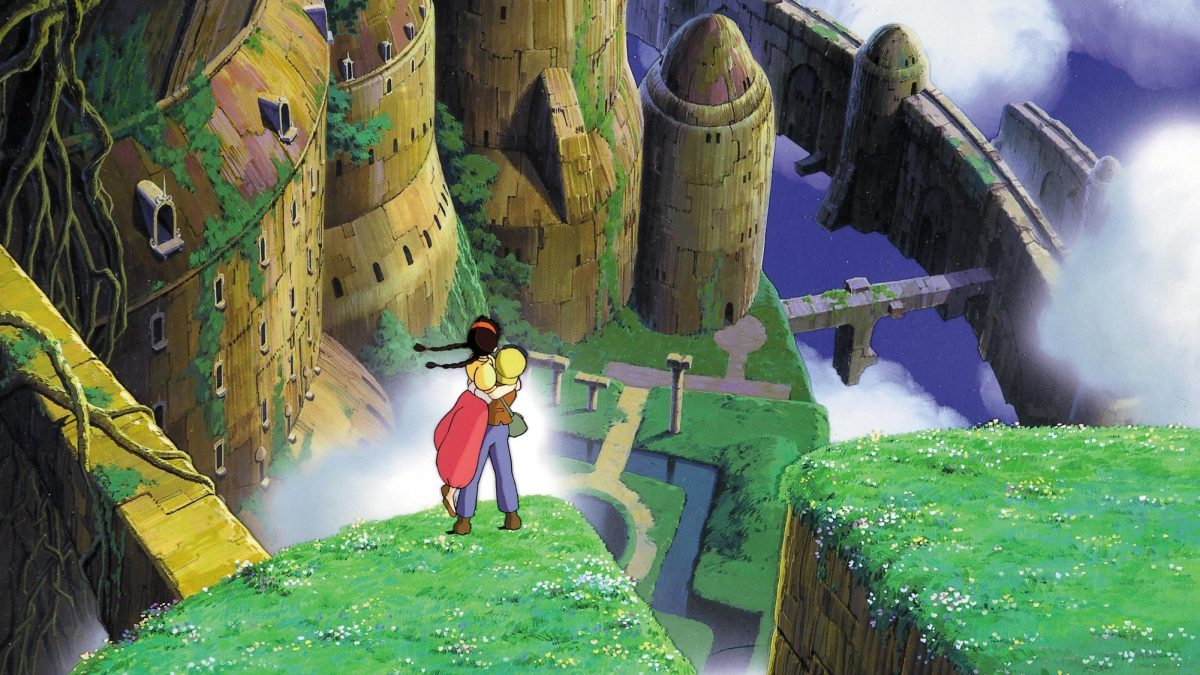In the early 1980s, Hayao Miyazaki’s manga “Nausicaä of the Valley of the Wind” was serialized in Tokuma Shoten’s Animage magazine. Miyazaki later adapted his manga into a film and laid the groundwork for Studio Ghibli, even before its official inception. This project marked the beginning of Miyazaki’s celebrated career and the birth of one of the most influential animation studios. Following this success, Studio Ghibli debuted with its first film “Castle in the Sky.”
Nausicaä of the Valley of the Wind
“Nausicaä of the Valley of the Wind” captures audiences with strong environmentalist and anti-war messages, set against the backdrop of a world recovering from apocalyptic destruction. Miyazaki was inspired by real-world events such as the Minamata disease and technological advancements during the Cold War. “Nausicaä” explores the dichotomy of nature’s beauty and its dangers with overarching themes of human impact on the environment and the consequences of war.
The film takes place a thousand years after an ecological apocalypse. Princess Nausicaä of the Valley of the Wind navigates a world infested by a toxic jungle and giant insects. Unlike others who fear the jungle, Nausicaä seeks to find a way for humanity to coexist with the insects. When a neighboring kingdom threatens to destroy the jungle with an ancient weapon, Nausicaä must act to prevent further devastation and forge a path toward a sustainable future.
Two years after the film’s release, the Chernobyl disaster occurred in Ukraine. The effects of nuclear fallout on the environment mirror scenes depicted in this film: the gas masks, the snow-like toxins and the now overgrown buildings. This year marks the 40th anniversary of the film. Even 40 years after the film’s release, our confrontation with environmental crises persists. After the Fukushima nuclear accident, threats of nuclear warfare and climate change, we are not far off from Nausicaä’s world becoming our reality. This reflects a collective failure to confront our arrogance.
Castle in the Sky

“Castle in the Sky” solidified several elements now characteristic of Ghibli’s identity. Its hand-drawn animation, environmental consciousness and strong, morally complex characters are common in future films. This film revisits and expands upon Miyazaki’s environmental concerns, enriching Ghibli’s thematic repertoire and setting a precedent for future works. Its exploration of technological advancements’ dual potential for destruction and benevolence is a metaphor for humanity’s environmental impact.
“Castle in the Sky” follows Sheeta and Pazu on their quest to rediscover Laputa, a legendary floating island from which Sheeta descends. Air pirates and a secret government agency soon threaten their journey. Both are eager to seize Sheeta’s power and gain access to Laputa’s riches and advanced technology. Those who sought its power nearly destroyed the floating island. This illustrates the destructive impact of greed on the environment.
The film also promotes anti-war sentiments by showcasing the destructive potential of militarization. The military represents the destructive potential of human ambition and the misuse of technology. Their relentless pursuit of Laputa’s power leads to widespread destruction and conflict, illustrating the futility and devastation of war. Pazu and Sheeta’s journey on the other hand, is one of peaceful resistance. They are driven by curiosity, heritage and a desire to protect rather than to conquer or exploit.
The Timeless Nature of Ghibli’s Message
Where Nausicaä is a princess directly involved with the fate of her nation, Sheeta and Pazu are just two children orphaned by militaristic forces. In “Nausicaä,” Miyazaki showed that conflict is more complicated than just good versus evil. But in “Castle in the Sky,” Miyazaki wrote the antagonist as a culmination of the worst of humanity. He shoots at innocent children and destroys nations. Even though “Castle in the Sky” is fiction, there are people who are like this in real life.
Together, these films not only reflect Miyazaki’s personal concerns and artistic vision but also set a precedent for Studio Ghibli’s future works. They embody the studio’s commitment to creating hand-drawn animations. They are not only visually stunning but also rich in meaningful, real-world commentary. It is evident that the messages of these early Ghibli films continue to resonate, reminding us of the enduring relevance of Miyazaki’s vision and the importance of addressing the environmental and societal issues they depict.
In revisiting these roots, Studio Ghibli Fest not only pays homage to the studio’s past but also inspires us to reflect on our present and future. It is a testament to the timeless nature of Ghibli’s storytelling and the studio’s unwavering dedication to themes that matter deeply to humanity.



